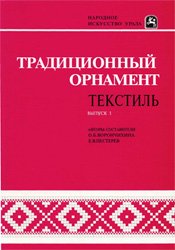- 2 402 202 книги
- Поиск
libcats.org








IPv6 Security
Scott Hogg, Eric VynckeI've read and reviewed three other books on IPv6 in the last four years: "IPv6 Essentials, 2nd Ed" (IE2E) in September 2006, "Running IPv6" (RI) in January 2006, and "IPv6 Network Administration" (INA) in August 2005. All three were five-star books, but they lacked the sort of attention to security that I hoped would be covered one day. IPv6 Security by Scott Hogg and Eric Vyncke is the book for which we have been waiting. Although some of the early "philosophical" security discussions (what's a threat, where are they) are lacking, the overwhelming amount of thorough and actionable content makes this book a winner.
IPv6 Security reminded me of Cisco Router Firewall Security (CRFS) by Richard Deal, which I also liked a lot. CRFS was Cisco-specific and helped readers squeeze all the network-level security features they could from their routers. IPv6 Security is similar, but even better because readers receive guidance for Windows, FreeBSD, Fedora, and even Solaris, in addition to Cisco gear. One note on FreeBSD, however: p 42 says "FreeBSD systems are susceptible to RH0 attacks," although FreeBSD issued a fix in April 2007 with Security Advisory FreeBSD-SA-07:03.ipv6.
In addition to offering configuration guidance for a variety of products, IPv6 Security used Scapy6 to demonstrate various IPv6 traffic types. I liked this approach, although a brief appendix explaining Scapy usage would have been appreciated. The book also covered material I had not seen elsewhere, like shim6 for multihoming. I would have liked some examples of IPv6 NetFlow output, as hinted at in Ch 11. Using SCTP with IPv6, also mentioned in the book, would have been helpful and innovative too.
My main issue with IPv6 Security (and it is minor, given this is a five star review) is the inappropriate use of the word "threat" early in the book, and the unnecessary focus on "insider abuse." On p xix the authors say IPv6 is a "threat," and they say threats "exist" in IPv6. IPv6 implementations may introduce vulnerabilities and exposures, but not "threats." On p 8 the authors cite the 2007 CSI/FBI study by saying "59% of all survey respondents suffered from insider abuse of network access." They use that "statistic" to justify saying "the percentage of internal attack sources is likely to be even higher today... The key issue is that most organizations do not spend 50 percent of their security budget on mitigating inside threats." This has nothing to do with IPv6. If it is related to IPv6, reading page 2 of the 2007 CSI/FBI shows that 59% figure means "Insider abuse of network access or e-mail (such as trafficking in pornography or pirated software)". That's hardly the "attack source" the reader should associate with security for IPv4 or IPv6 networks.
Overall, I strongly recommend reading IPv6 Security. There's no other book on the market with the depth of actionable defensive information available.
IPv6 Security reminded me of Cisco Router Firewall Security (CRFS) by Richard Deal, which I also liked a lot. CRFS was Cisco-specific and helped readers squeeze all the network-level security features they could from their routers. IPv6 Security is similar, but even better because readers receive guidance for Windows, FreeBSD, Fedora, and even Solaris, in addition to Cisco gear. One note on FreeBSD, however: p 42 says "FreeBSD systems are susceptible to RH0 attacks," although FreeBSD issued a fix in April 2007 with Security Advisory FreeBSD-SA-07:03.ipv6.
In addition to offering configuration guidance for a variety of products, IPv6 Security used Scapy6 to demonstrate various IPv6 traffic types. I liked this approach, although a brief appendix explaining Scapy usage would have been appreciated. The book also covered material I had not seen elsewhere, like shim6 for multihoming. I would have liked some examples of IPv6 NetFlow output, as hinted at in Ch 11. Using SCTP with IPv6, also mentioned in the book, would have been helpful and innovative too.
My main issue with IPv6 Security (and it is minor, given this is a five star review) is the inappropriate use of the word "threat" early in the book, and the unnecessary focus on "insider abuse." On p xix the authors say IPv6 is a "threat," and they say threats "exist" in IPv6. IPv6 implementations may introduce vulnerabilities and exposures, but not "threats." On p 8 the authors cite the 2007 CSI/FBI study by saying "59% of all survey respondents suffered from insider abuse of network access." They use that "statistic" to justify saying "the percentage of internal attack sources is likely to be even higher today... The key issue is that most organizations do not spend 50 percent of their security budget on mitigating inside threats." This has nothing to do with IPv6. If it is related to IPv6, reading page 2 of the 2007 CSI/FBI shows that 59% figure means "Insider abuse of network access or e-mail (such as trafficking in pornography or pirated software)". That's hardly the "attack source" the reader should associate with security for IPv4 or IPv6 networks.
Overall, I strongly recommend reading IPv6 Security. There's no other book on the market with the depth of actionable defensive information available.
EPUB | FB2 | MOBI | TXT | RTF
* Конвертация файла может нарушить форматирование оригинала. По-возможности скачивайте файл в оригинальном формате.
Популярные книги за неделю:

Проектирование и строительство. Дом, квартира, сад
Автор: Петер Нойферт, Автор: Людвиг Нефф
Размер книги: 20.83 Mb

Система упражнений по развитию способностей человека (Практическое пособие)
Автор: Петров Аркадий НаумовичКатегория: Путь к себе
Размер книги: 818 Kb

Сотворение мира (3-х томник)
Автор: Петров Аркадий НаумовичКатегория: Путь к себе
Размер книги: 817 Kb

Радиолюбительские схемы на ИС типа 555
Автор: Трейстер Р.Категория: Электротехника и связь
Размер книги: 13.64 Mb
Только что пользователи скачали эти книги:

Конструкционные материалы. Справочник
Автор: Авторы: Б.Н.Арзамасов, Автор: В.А.Брострем, Автор: Н.А.Буше и др. Под общей редакцией Б.Н.Арзамасова.
Размер книги: 10.46 Mb

Aging and the Indian Diaspora: Cosmopolitan Families in India and Abroad (Tracking Globalization)
Автор: Sarah Lamb
Размер книги: 4.18 Mb

Comprehensive Medicinal Chemistry II, Volume 8 : Case Histories
Автор: David J Triggle, Автор: John B Taylor
Размер книги: 3.21 Mb

Традиционный орнамент текстиль. 1 выпуск
Автор: Ворончихина О.Б., Автор: Пестерев Е.В.Категория: ДИЗАЙН, ХОББИ и РЕМЕСЛА
Размер книги: 8.33 Mb




